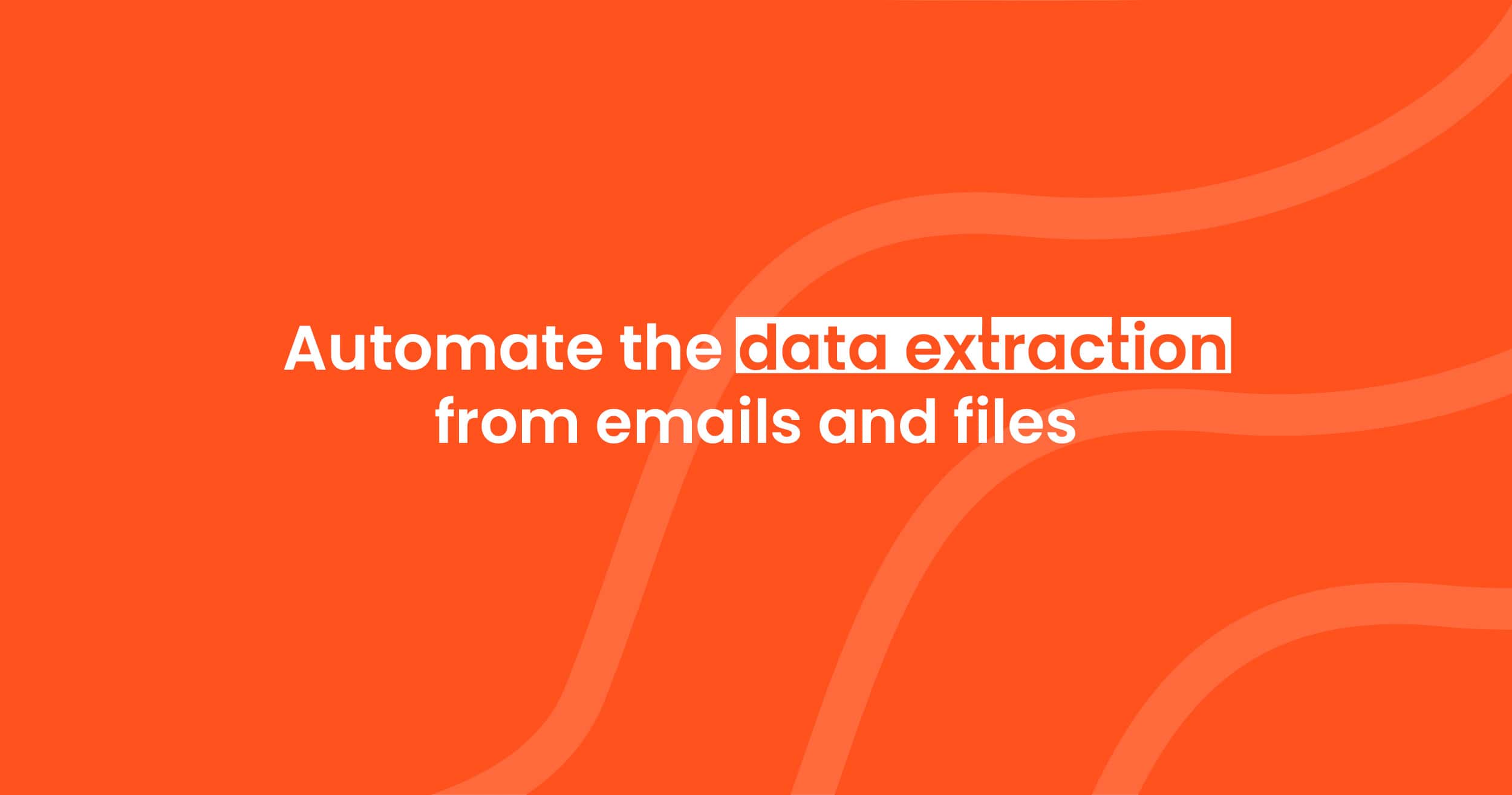Automating Legal Document Processing: Extracting Data from Contracts, NDAs, and Agreements
Automate legal document processing with Parsio. Extract key details from contracts, NDAs, and agreements without manual work. Save time and reduce errors. 🚀
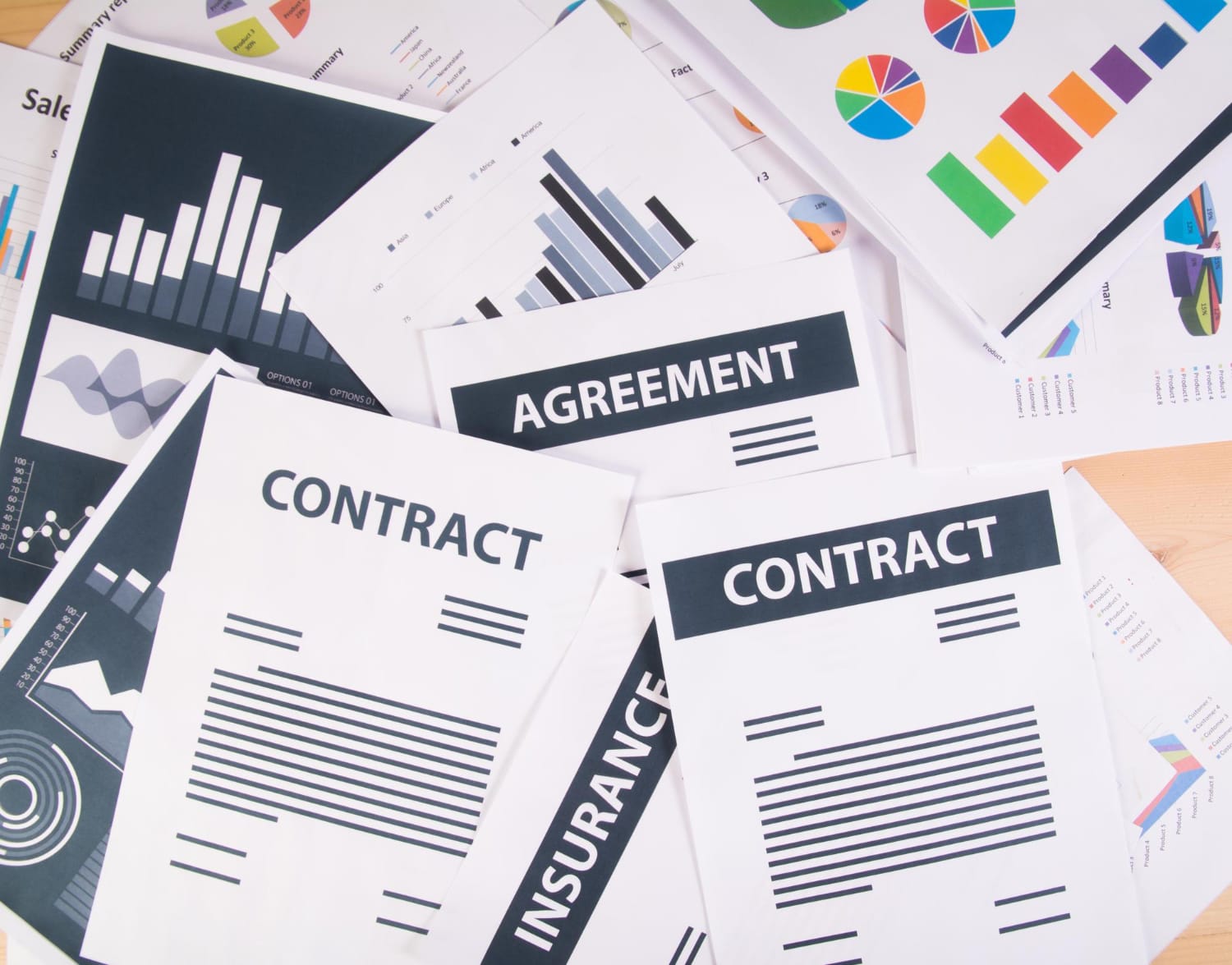
Businesses deal with many legal documents like contracts, NDAs, and agreements. These documents contain important details such as names, dates, payment terms, and legal clauses.
Manually copying this data is time-consuming and can lead to errors. Automating this process makes legal document management easier and more accurate.
With Parsio, you can automatically extract key information from legal documents and export the data to Google Sheets, CRMs, or other tools. In this guide, we will show you how to set up document automation using Parsio.
Why Automate Legal Document Processing?
Legal documents contain structured data, but extracting this information manually can be slow and inefficient. Automation helps by:
- Saving time – No need to type out names, dates, and legal terms manually.
- Reducing errors – Avoid mistakes in contract deadlines, payments, and conditions.
- Organizing documents – Keep contract details easily searchable.
- Tracking important deadlines – Automate reminders for contract renewals and expirations.
Looking for other automation ideas? Read How Document Extraction Software Revolutionizes Business Automation.
What Data Can You Extract from Legal Documents?
Using Parsio, you can extract key details from contracts, NDAs, and agreements, including:
Contract Parties
- Name of individuals or businesses
- Contact details (email, phone number)
Key Dates
- Contract signing date
- Expiration and renewal dates
- Payment due dates
Payment Terms
- Agreed amount
- Penalties for late payments
- Billing frequency (monthly, yearly)
Legal Clauses
- Confidentiality agreements (NDA terms)
- Termination clauses
- Liability and indemnity clauses
Want to learn how AI improves document processing? Check out What is Cognitive Document Processing?.
How to Automate Data Extraction Using Parsio
With Parsio, extracting data from legal documents is seamless and automated. Whether you're dealing with contracts, tax forms, or pay stubs, Parsio’s AI-powered and GPT-powered parsers eliminate the need for manual data entry.
Step 1: Upload Legal Documents to Parsio
- Sign up for Parsio – Create a free account at Parsio.
- Create a new inbox – This generates a unique email address (e.g.,
[email protected]). - Send documents to the inbox – Forward emails with attachments, upload PDFs, or use Zapier/API integrations.
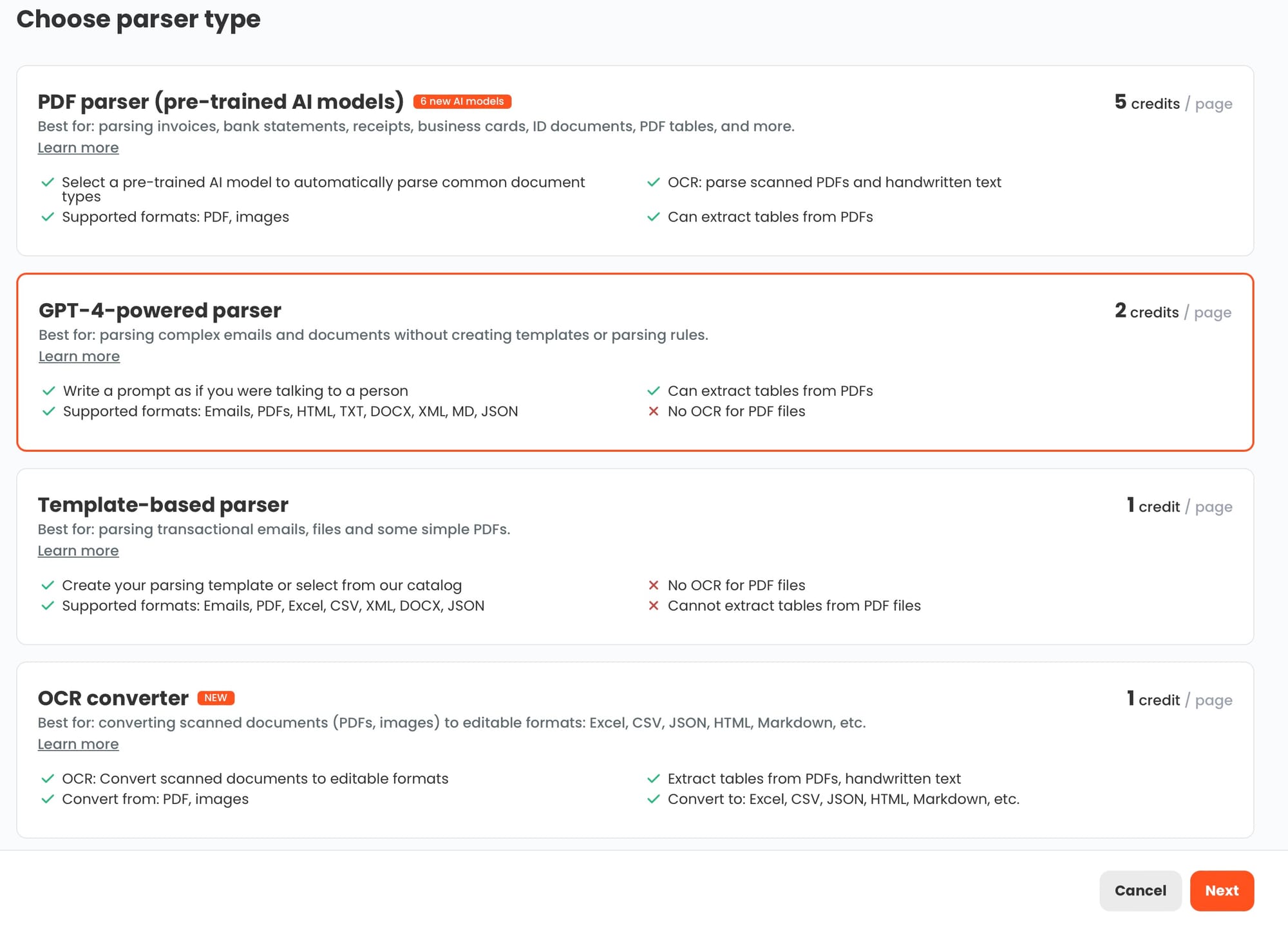
💡 Tip: If your documents are in PDF format, you may also find this guide helpful: Extract Data from PDF: 5 EfficientTechniques and Tools.
Step 2: Choose the Right Parser
AI-Powered Parser (Pre-Trained Models for Legal Documents)
For structured legal documents such as:
✔ Contracts
✔ Pay Stubs
✔ Checks
✔ W-2 Tax Forms (US)
✔ 1098 Tax Forms (US)
✔ Marriage Certificates (US)
📌 How It Works
- Select the AI-powered parser and choose the relevant pre-trained model.
- Send documents to your inbox via email, upload, or API.
- Parsio automatically extracts all available data without the need for manual templates.
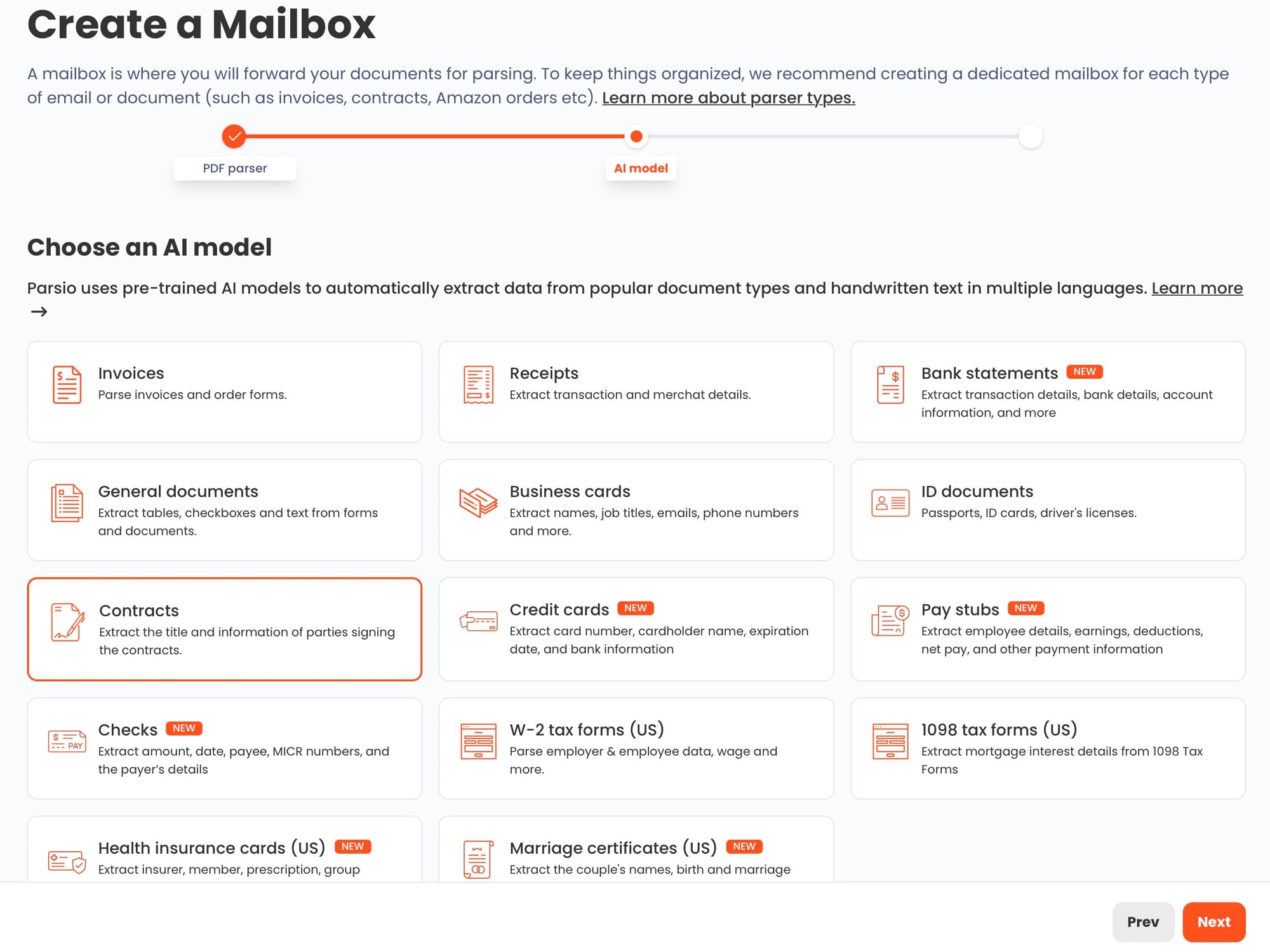
GPT-Powered Parser (Flexible, Customizable Extraction)
For unstructured or complex documents, use the GPT-powered parser, which allows users to extract specific data by writing a simple prompt.
📌 How It Works
- Select the GPT parser in your Parsio inbox.
- Upload a sample document to define the data structure.
- Write a simple prompt – List the data fields you need (e.g., "Extract contract date, client name, payment terms").
- Parsio extracts the data based on your prompt.
Step 3: Export and Use Extracted Data
Once extracted, data can be:
✅ Downloaded as CSV, Excel, or JSON
✅ Sent to Google Sheets for tracking
✅ Integrated with CRM tools for contract management
✅ Exported via Zapier, API, or Webhooks
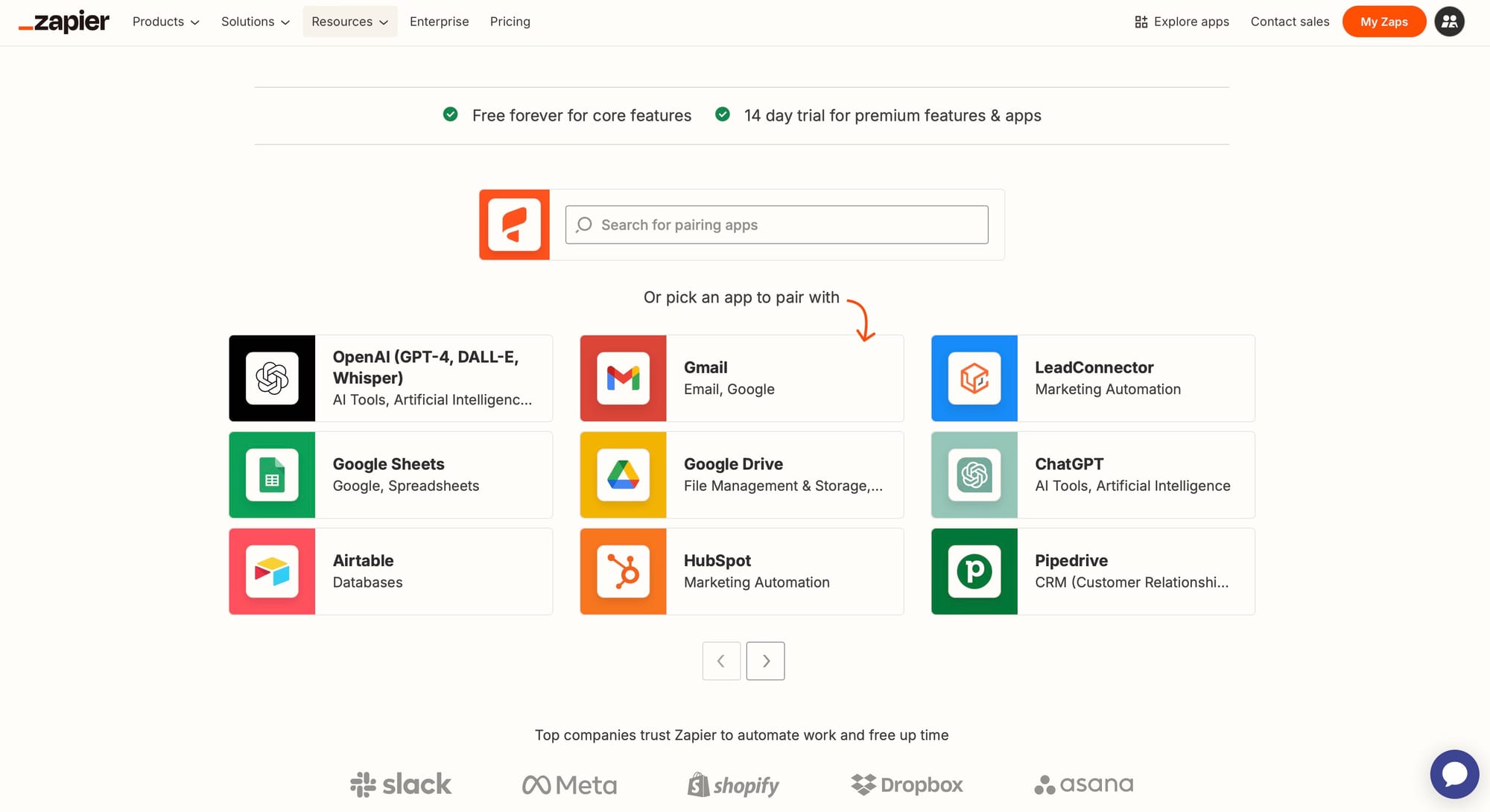
With Parsio’s AI and GPT-powered extraction, legal document processing becomes fully automated, highly accurate, and effortless.
Need to extract invoice data as well? Read How to Automate Invoice Data Extraction for QuickBooks Integration.
Use Cases: Who Can Benefit?
Automated legal document processing is useful for different industries:
- Law firms – Review and manage contracts faster.
- HR departments – Track NDAs and employee agreements.
- Finance teams – Automate payment terms and billing schedules.
- Businesses – Organize supplier and vendor contracts.
Need a general guide on automating data extraction? Read Automating Document Classification: Everything You Need toKnow.
Common Challenges and How to Solve Them
Complex Legal Terms
- Problem: Some contracts contain long and detailed legal clauses.
- Solution: Use Parsio’s AI-powered parsing to detect key terms automatically.
Handwritten Documents
- Problem: Some agreements are scanned or handwritten.
- Solution: Enable OCR (Optical Character Recognition) in Parsio to extract text from scanned files. Learn more about OCR in What is Automated OCR Data Capture?.
Different Document Formats
- Problem: Legal documents come in various formats (PDF, Word, scanned images).
- Solution: Standardize file types and use Parsio’s OCR and AI features to extract structured data.
Conclusion
Manually processing legal documents is slow and error-prone. Automating data extraction with Parsio saves time and ensures accuracy.
With Parsio, you can extract names, dates, payment terms, and legal clauses from contracts, NDAs, and agreements. Start automating today and improve your legal document workflow!
Looking for more automation solutions? Check out The Ultimate Guide to Zonal OCR for PDF Parsing.

